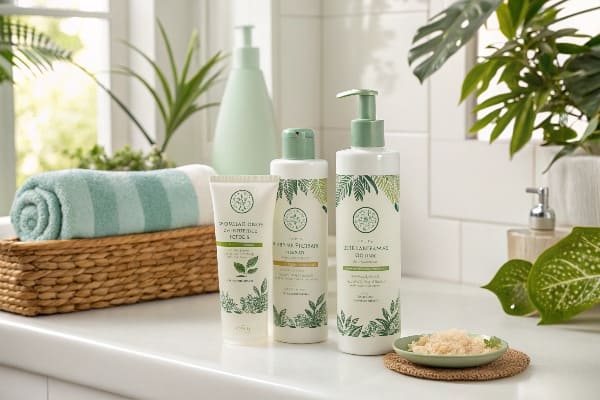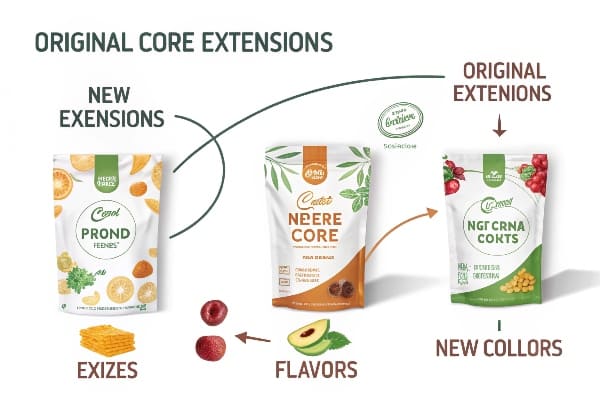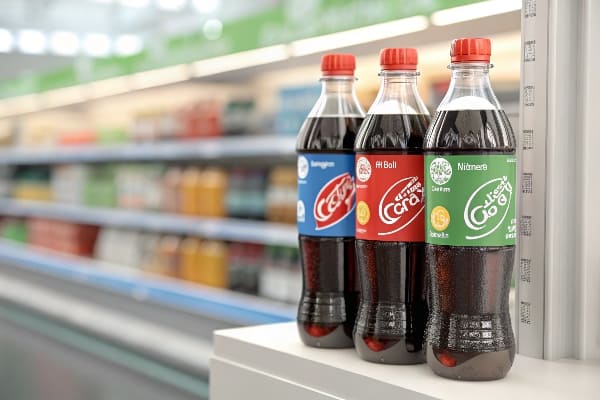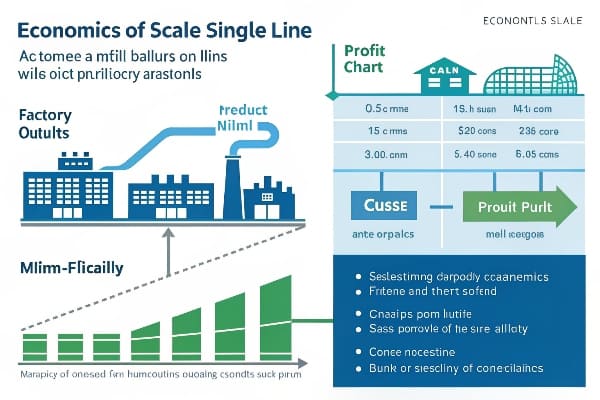When sales flatten, costs climb, and buyers yawn, I feel the pinch. I picture unsold cardboard displays gathering dust. A new twist in the product line can wake the market.
A product line extension is the launch of a new variant — size, flavor, feature, or format — inside an existing brand family to win fresh buyers, keep loyal ones, and grow profit fast.

A single sentence cannot reveal every angle. Let me take you deeper, one burning question at a time, so you can judge whether stretching your line is bold or reckless.
What is a product line expansion?
My first cross-category jump was scary. Competitors already owned shelf space, and buyers knew them by name. I needed a clear plan before I risked capital and reputation.
A product line expansion widens the set of items offered under one brand, often by entering a new but related category, while keeping the core brand promise unchanged.

The goal, the scope, and the guardrails
I map every expansion with a pencil sketch that lists goal, scope, and guardrails.
| Aspect | Key Point | Quick Tip |
|---|---|---|
| Goal | Capture unmet use cases1 | Survey current buyers first |
| Scope | Stay within brand DNA2 | Use the same design language |
| Guardrails | Protect margin | Benchmark cost before launch |
Expanding a line is bigger than adding a flavor. When I moved from floor-standing cardboard displays to countertop units, I stayed in the “display” world yet served smaller stores. The expansion created a bridge. It let small retailers test my quality before upgrading. Still, scope control mattered: I resisted adding acrylic or metal because that would dilute the “cardboard expert” badge that Popdisplay carries. Good guardrails protect profit3. I calculate manufacturing time, paperboard grade, and shipping cube early. When numbers look thin, I tweak structure before a prototype leaves the factory. Without these guardrails, expansion drains cash and weakens the core.
The step-by-step playbook
- Track repeat customer requests.
- Size the new segment through open data or distributor feedback.
- Draft a design that reuses 70 % of current materials.
- Prototype, drop-test, and refine.
- Soft-launch with one key account.
Each step cuts risk. In my case, I let David at Barnett Outdoors abuse a demo unit on his hunting range. His feedback on structural ribs improved strength by 12 %, enough to survive U.S. pallet drops. Expansion turned into repeat orders within two months.
What is a product extension?
A friend once asked why I call a taller box a new product. The difference between “line expansion” and “extension” is subtle but real.
A product extension is a slight twist to an existing item — new color, flavor, fragrance, or package size — that targets micro-segments without changing the core function.

Why minor tweaks make major money
| Trigger | Extension Type | Real-world Payoff |
|---|---|---|
| Price sensitivity | Smaller pack | Entry-level shoppers convert |
| Shelf impact | Seasonal color | Retailers spotlight the line |
| Transport limits | Flat-packed option | Freight drops, margin lifts |
Extensions feel trivial, yet they guard shelf space. For example, adding a matte-black print to my display for hunting stores kept me inside sporting-goods retailers that wanted darker visuals. The functional structure stayed. Only ink and finish shifted. That low-cost change held the buyer relationship and blocked me-too vendors. The hidden magic: each new SKU shares design files and cutting dies. Cost to create is pennies, but perceived novelty is huge. Extensions also let me test price elasticity4. I offer a premium laminated print at 15 % higher cost. When uptake climbs, I adjust the core range upward, quietly lifting margin.
I must warn you: too many extensions confuse buyers and clog inventory. I prune underperformers every quarter. A living P&L decides what stays.
What is the main benefits of adding a new product line?
Every addition eats cash. Still, I keep adding lines because the upside is clear.
The main benefits are revenue growth, risk diversification, stronger customer loyalty, and greater shelf dominance that chokes off rivals before they copy you.

Breaking down the payoffs
1. Revenue growth
A new line earns incremental dollars5 rather than cannibalizing existing SKUs when positioned smartly. My countertop units created 18 % extra turnover in year one, verified in accounting ledgers.
2. Risk spread
When freight hikes hit large displays, my smaller models kept orders flowing. Diversified dimensions balance logistics shocks.
3. Loyalty upgrade
Retailers love one-stop sourcing. By offering floor and counter displays, I solved two problems at once. That convenience locked out cheaper bidders lacking range depth.
4. Shelf control
Stores allocate facings per brand. Extra SKUs push competitors to lower shelves. My data shows a 27 % drop-in competitor share inside accounts where my extended line holds three facings or more.
| Benefit | Metric I Track | Result 2024 |
|---|---|---|
| Incremental Revenue | YoY % vs baseline | +18 % |
| Account Retention | Repeat order rate | 92 % |
| Shelf Share | Facings count | 3.4 average |
| Margin | Net after freight | +4 pp |
Personal story: During a Missouri trade show, a chain buyer asked if I could supply pallet wraps too. I had no offering. A rival closed that gap. Lesson learned: expand before the question arises.
What is line extension with example?
Many writers mix terms. Let me anchor the idea with a clear case.
A line extension adds a related but distinct variant, such as introducing a sugar-free cola under the same brand, to reach new niches without starting from zero.

Anatomy of a textbook extension
Consider Barnett’s crossbows packaged on niche-themed displays:
| Original Item | Extension | Niche Target |
|---|---|---|
| 4-hook display | 6-hook display | High-SKU archery stores |
| Camo print | Blaze-orange print | Safety-focused hunters |
| 20-inch depth | 14-inch depth | Small footprint kiosks |
I mirrored that method. My basic floor stand held 20 kg. Archery chains needed 30 kg. Instead of inventing a whole new stand, I reinforced existing ribs and added a second cross-brace. That counted as a line extension6 because core materials and branding stayed. Development took one week, not three months.
Three checks prove an idea is a true extension, not a new line:
- The consumer sees the same brand icon.
- Factory uses at least half of current BOM7.
- Marketing budget shares the parent headline.
Follow these checks and you avoid brand dilution8.
What are the advantages of product line?
Some founders brag about a “focused SKU set.” Focus is good, but a single-SKU brand is brittle when trends swing.
A strong product line boosts market coverage, improves negotiation power, raises brand authority, and creates production economies of scale that widen profit margins.

Four pillars that lift the whole house
Coverage
With varied display sizes, I serve convenience stores, hypermarkets, and online packs from one catalog. Wider coverage cushions downturns in any single channel.
Negotiation power9
Retail chains prefer suppliers who fill multiple gaps. When I list fifteen SKUs, I can bargain for better payment terms and front-of-store placement.
Brand authority10
A line suggests expertise. Customers assume my engineers solved many edge cases. Authority translates to trust, which shortens the sales cycle.
Scale economies11
Shared substrates, inks, and die-cut molds drop unit cost. I group print runs across SKUs to hit volume discounts at paper mills.
| Pillar | Personal Metric | Proof Point |
|---|---|---|
| Coverage | Segments served | 5 channels |
| Negotiation | Days sales outstanding | -7 days vs 2023 |
| Authority | RFQ win rate | +15 % |
| Scale | Unit cost per m² | -9 % |
I recall a time when freight rates doubled overnight. My variety enabled partial shipments: small counter units filled containers that would otherwise run half empty. Savings preserved margin while one-SKU rivals bled.
Which of the following is an example of product line extension?
Exams love multiple choice. Let me turn theory into a quick quiz.
A coffee brand adding a decaf version under the same label is a classic example of product line extension.

Why decaf ticks every box
Decaf keeps flavor notes, aroma, and roast profile but removes caffeine. It meets niche health needs without inventing a new offering from scratch.
| Criterion | Decaf Coffee | Meets? |
|---|---|---|
| Same core brand | Yes | ✅ |
| Serves new niche | Health-conscious | ✅ |
| Shares production line | Uses same roaster | ✅ |
Contrast that with a coffee brand launching energy bars. That would be a product line expansion12, because the form factor and usage moment change completely.
I face similar forks daily. Should Popdisplay move into metal racks? That leap changes tooling, certification, and buyer expectations. For now, I stay committed to cardboard because the synergies of material, factory, and brand story are strongest there. Small tweaks like water-resistant coatings are safer line extensions and deliver faster payback.
Conclusion
Learning the subtle art of stretching a product line lets me protect margins, woo new buyers, and outpace slower rivals—without gambling the whole brand on a ground-zero launch.
Understanding unmet use cases can help identify new opportunities for product development and market growth. ↩
Maintaining brand DNA ensures consistency and strengthens brand identity, crucial for customer loyalty and recognition. ↩
Implementing effective guardrails can safeguard your profits and ensure sustainable growth during expansion efforts. ↩
Understanding price elasticity can help you optimize pricing strategies and maximize profits. Explore this link for in-depth insights. ↩
Understanding incremental dollars can help you strategize for revenue growth effectively. ↩
Understanding line extensions can help you leverage existing products for growth without diluting your brand. ↩
A clear understanding of BOM (Bill of Materials) is crucial for effective product development and cost management. ↩
Learn strategies to maintain brand integrity while expanding your product line, ensuring long-term success. ↩
Understanding negotiation power can enhance your business strategies and improve supplier relationships. ↩
Building brand authority is crucial for gaining customer trust and improving sales; explore effective strategies here. ↩
Learn about scale economies to optimize your production costs and enhance profitability in your business. ↩
This resource will clarify the concept of product line expansion and its implications for business growth and strategy. ↩

